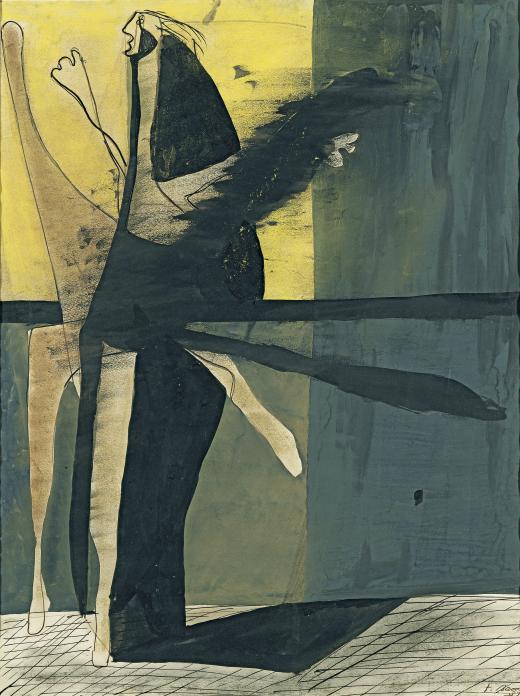PICASSO: THE GATEWAY TO ART
“Picasso opened the door to all these systems. I have tried to stick my foot in the door so that it does not close. Picasso was one of that genius caste which includes Rembrandt, Michelangelo, Van Gogh, and above all Velázquez”.
Francis Bacon*
Born into a wealthy British family living in rural Ireland, a place of upheaval in the early 20th century, Francis Bacon was confronted with Pablo Picasso’s work in Paris’ Paul Rosenberg Gallery at the age of 17. Bacon himself revealed that this signaled his shift towards a career in art; this is attested to in some of his earliest works, such as Composition (Figure) (1933), which clearly references Picasso’s works from the 1920’s, especially Las casetas, the series depicting deformed bathers holding a key.
Starting with absolutely no technical training, Bacon gradually entered the world of art and quickly assimilated what other creators near him, such as Roy de Maistre, were able to teach him from the technical standpoint. The mere handful of paintings that have survived from this time—Bacon was dissatisfied with most of them and destroyed them—attest to his early influence from Analytical and Synthetic Cubism, and from Picasso’s biomorphic Cubism, which would lead Bacon to develop a language of his own. This vocabulary garnered recognition for the first time in 1933, when the critic Herbert Read reproduced Bacon’s Crucifixion (1933) in a privileged spot, opposite Picasso’s Bather (1929), in his publication Art Now: An Introduction to the Theory of Modern Painting and Sculpture. Even though Bacon received this recognition at the start of his career and at a relatively young age, he did not enjoy the same good fortune in the subsequent years.
* "Francis Bacon: I painted to be loved", interview by Francis Giacobetti conducted on February 1992, published in The Art Newspaper, no. 137, June 2003, pp. 28-29

